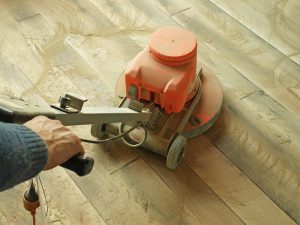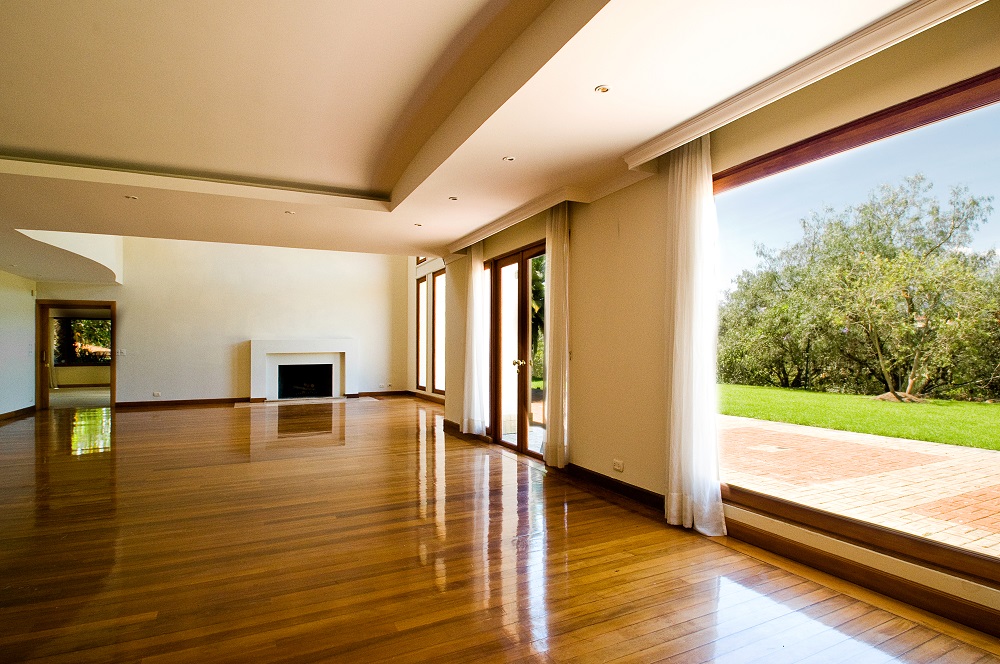Whether you’re building new home construction or remodeling an existing residence, you’re always looking at how to get the best value. Which is why you’re considering solid wood flooring. You’ve heard that it can be pricey – and in fact, some types of wood are very pricey – but why? Remember, as with all investments, it’s not what you put into your house on the front-end, but what you get out of it on the back-end, that determines the value.
Benefits of solid wood flooring
There’s a reason for the costs of materials and labor to install your solid wood flooring. It’s virtually unbeatable for quality, and there is nothing like solid wood throughout a home.
Benefit No. 1: Beauty
Most people agree, hardwood floors are gorgeous. They can tie together multiple rooms and create consistency and flow throughout a large space. They are pleasing both to the eye and to the feet, as they can be pleasant to walk across as well. They stay cool in the summer, and can be easily warmed and protected with rugs in traffic areas.

Solid wood flooring comes in a range of beautiful colors.
Benefit No. 2: Durability
Solid wood flooring lasts a long time – and we mean long – with proper care and maintenance. There are some home throughout the U.S. that still have their original wood flooring from the 18th or even the 17th centuries! And in Europe, there are some buildings with wooden floors that claim to be original as far back as the 12th century. Depending on the type of wood your flooring is made of, it will require regular cleaning and resurfacing, polishing and oiling, at different intervals. As long as you actively maintain your floors, their lifespan can last nearly as long as the house itself.
Benefit No. 3: Sturdy
The reason that solid wood flooring is so durable over the long-term is because it’s sturdy and strong against day-to-day damage. Wood floors hold up to having things dropped on them, drug across them, and even if someone carves at them. Most damage to hardwood flooring can be repaired, but in the worst-case scenario, the plant or tiles that are damaged can be replaced individually.
Benefit No. 4: Easy to Clean & Hypoallergenic
Hardwood floors may require regular weekly or monthly routine maintenance to keep them at their best, but on a day-to-day basis, they are easy to clean. Whether you vacuum or sweep and mop, most solid wood flooring requires no special daily treatments. In addition, because hardwood floors don’t trap dust, dirt, or allergens the way that carpets and other flooring materials can, they are often friendlier to people with allergies.
Benefit No. 5: Easy to Repair
 Hardwood floors can be sanded and refinished. About every 10 years, you might consider having your floors polished up by a professional. This removes surface level scratches and staining, and protects deeper layers of the wood. Depending on the type of wood and the frequency of use, you may need to have your floors done more often. Make sure you research the proper care and maintenance of the wood that your floors are made of.
Hardwood floors can be sanded and refinished. About every 10 years, you might consider having your floors polished up by a professional. This removes surface level scratches and staining, and protects deeper layers of the wood. Depending on the type of wood and the frequency of use, you may need to have your floors done more often. Make sure you research the proper care and maintenance of the wood that your floors are made of.
Pro Tip: The Right Subflooring
Solid wood flooring can look and feel great when first installed – that’s a given. But, what can make all the difference over the years is the subflooring. Make sure that you investigate your options for premium subflooring. Your house will settle, shift, and move over the years, causing changes in the gapping between your flooring planks. Over time, wooden floors can begin to creak, but it is often because of sub-par subflooring rather than anything wrong with the wood itself.
The Perfect Solid Wood Flooring for You
Different types of wood are better or worse for flooring, depending on the long-term wear you expect the rooms to receive. Softer woods like pine will dent and scratch more easily, even with protective treatments, so be wary of the fact that soft wood creates more scarred flooring.
Some types of wood are more likely to swell or suffer greater damage from moisture, and will be more or less friendly to areas with high humidity. If you live somewhere with a lot of (or very little) rain, or your home location has high (or low) humidity levels for whatever reason, research what type of solid wood flooring will be least likely to be affected by your environment.
